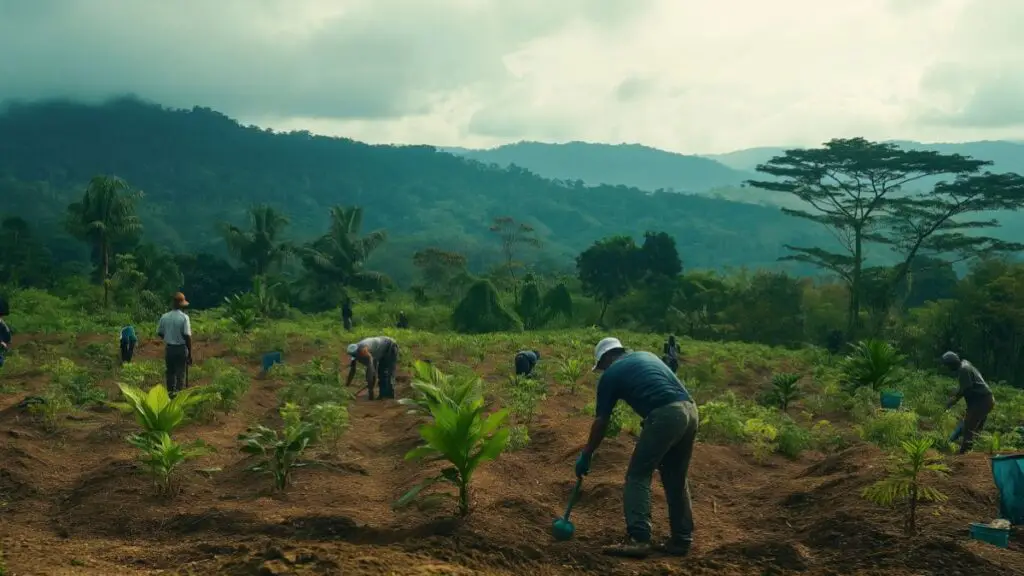Sustainable Travel Tips for Eco-Conscious Explorers: How to Travel Responsibly in 2025
Table of Contents
Introduction
Did you know that tourism accounts for 8% of global greenhouse gas emissions? As the world becomes more environmentally conscious, travelers are rethinking how they explore the globe. Responsible tourism isn’t just a trend—it’s a necessity.
Sustainable travel is about making choices that minimize your environmental impact while maximizing positive effects on local communities and ecosystems. Whether you’re planning a long-haul adventure or a weekend getaway, small adjustments can lead to meaningful change.
This guide offers practical, actionable sustainable travel tips—from choosing eco-friendly transportation and accommodation to minimizing plastic use and supporting ethical tourism practices. Whether you’re a seasoned jet-setter or just starting to travel more mindfully, these tips will help you align your wanderlust with your values.
In-Depth Outline
1. Choose Eco-Friendly Transportation
- Prioritize trains, buses, or electric car rentals over flights.
- Take direct flights to reduce takeoff/landing emissions.
- Offset carbon emissions through verified programs.
- Opt for walking or biking tours in urban areas.
- Use public transportation instead of taxis or ride shares.
Table: Transportation Methods & Carbon Impact
| Mode of Transport | CO₂ Emissions (kg per km/passenger) | Eco-Friendliness Score (1–5) |
| Plane (short haul) | 0.255 | 2 |
| Train (electric) | 0.041 | 5 |
| Car (solo driver) | 0.192 | 3 |
| Bus | 0.105 | 4 |
2. Stay at Sustainable Accommodations

- Look for eco-certifications (e.g., Green Key, EarthCheck).
- Choose locally owned lodges over global chains.
- Reduce energy use: reuse towels, turn off lights/AC.
- Check if the hotel supports conservation or social initiatives.
- Use eco-friendly booking platforms like Ecobnb or BookDifferent.
Table: Sustainable Hotel Comparison
| Property Name | Certification | Notable Sustainable Feature |
| 1 Hotel Brooklyn Bridge | LEED Gold | Rainwater reclamation system |
| Soneva Fushi (Maldives) | EarthCheck | Zero waste & marine conservation |
3. Pack Light and Smart

- Lighter luggage = fewer emissions during transport.
- Bring reusable items (bottle, utensils, shopping bag).
- Use reef-safe sunscreen and biodegradable toiletries.
- Avoid single-use packaging.
- Choose sustainable fabrics (organic cotton, bamboo).
4. Respect Local Culture and Nature

- Learn basic phrases in the local language.
- Dress appropriately and follow local customs.
- Stick to marked trails to avoid ecosystem disruption.
- Avoid animal tourism that exploits wildlife.
- Don’t remove natural souvenirs (sand, shells, plants).
Table: Ethical vs. Unethical Tourist Activities
| Activity | Ethical? | Why or Why Not? |
| Elephant riding | ❌ | Often involves abuse and poor conditions |
| Wildlife photography tours | ✅ | Non-invasive and conservation-friendly |
| Visiting orphanages | ❌ | Can exploit vulnerable communities |
| Volunteering with NGOs | ✅ | Supports development when done properly |
5. Support the Local Economy

- Eat at family-run restaurants or food stalls.
- Buy locally made crafts instead of mass-produced souvenirs.
- Choose local tour guides for deeper cultural insight.
- Stay in guesthouses or homestays.
- Avoid chain stores and global brands when possible.
6. Offset Your Carbon Footprint

- Use carbon calculators (e.g., MyClimate, Carbon Footprint).
- Support reforestation and clean energy projects.
- Offset emissions from flights, cruises, or long-distance travel.
- Choose programs verified by Gold Standard or VCS.
- Pair offsets with behavior change, not as a guilt-free pass.
Table: Popular Carbon Offset Programs
| Program Name | Verified By | Project Types | Cost (per ton of CO₂) |
| MyClimate | Gold Standard | Reforestation, biogas | $23 |
| Climate Neutral Now | UN Verified | Wind, solar, clean cookstoves | $10 |
7. Practice Zero Waste Travel

- Bring a zero-waste kit (cloth napkin, travel cutlery).
- Refuse plastic straws, cups, and bags.
- Choose accommodations that compost or recycle.
- Refill water bottles at filtered stations or with a purifier.
- Avoid printed tickets—go digital where possible.
8. Be Mindful of Water and Energy Use

- Take shorter showers, especially in drought-prone areas.
- Don’t leave electronics plugged in unnecessarily.
- Turn off AC or heating when leaving your room.
- Report leaks or inefficiencies in your hotel.
- Choose low-impact activities like hiking or kayaking.
Detailed Content Expansion
1. Choose Eco-Friendly Transportation
Transportation is one of the largest contributors to travel-related emissions. Making better transit choices is one of the easiest ways to lower your carbon footprint.
Air Travel:
Whenever possible, limit flying, especially short-haul flights. These emit disproportionately high carbon due to frequent takeoffs and landings. When flying is necessary, choose direct flights and airlines that practice fuel efficiency.
Trains and Buses:
Rail travel, particularly on electric lines, is among the greenest ways to travel. For example, Amtrak in the U.S. emits around 0.04 kg CO₂ per passenger per km—significantly lower than flying. Buses like Greyhound or FlixBus also offer low-emission alternatives and often include free Wi-Fi.
Carbon Offsets:
When you must fly, offset the carbon footprint. Programs like Gold Standard or MyClimate allow you to fund projects that balance your emissions through initiatives like forest conservation or clean cooking technology.
Urban Exploration:
In cities, walk or rent a bike instead of hailing a cab. Many urban areas now offer shared e-scooters and robust public transport systems, which are more efficient and eco-friendly.
Comparison Table: Transportation and Carbon Impact
| Mode of Transport | CO₂ Emissions (kg per km/passenger) | Eco-Friendliness Score (1–5) |
| Plane (short haul) | 0.255 | 2 |
| Train (electric) | 0.041 | 5 |
| Car (solo driver) | 0.192 | 3 |
| Bus | 0.105 | 4 |
Key Takeaway: Always compare options—slowing down and choosing the scenic route might just be the best move for both you and the planet.
2. Stay at Sustainable Accommodations
Where you stay can significantly influence your environmental impact. From energy-efficient designs to local community engagement, sustainable accommodations are redefining luxury and responsibility.
Eco-Certified Hotels:
Look for recognized sustainability certifications such as:
- Green Key
- LEED Certification
- EarthCheck
These certifications ensure that the property meets specific environmental, social, and operational standards.
Locally Owned Stays:
Opt for boutique hotels, guesthouses, or eco-lodges that are locally owned and operated. These often use fewer resources and reinvest earnings into their communities, providing a more authentic and sustainable travel experience.
Eco-Friendly Amenities:
Simple steps like reusing towels, minimizing laundry, turning off lights/AC, and using bulk toiletries help reduce the environmental impact. Many green hotels also provide filtered water stations to discourage single-use plastics.
Platform Examples:
Use booking sites like Ecobnb, BookDifferent, or the “eco-conscious” filters on mainstream platforms to find sustainable options easily.
Table: Hotel Sustainability Comparison
| Property Name | Certification | Sustainable Feature |
| 1 Hotel Brooklyn Bridge | LEED Gold | Reclaimed wood & rainwater reuse |
| Soneva Fushi, Maldives | EarthCheck | Zero-waste & coral restoration |
| Casa Viva, Mexico | Local Certified | Solar energy, composting toilets |
Key Takeaway: Ask questions. Where does the water come from? Do they recycle? Sustainable hotels are proud to share their practices—if they don’t, that’s a red flag.
Conclusion
Sustainable travel doesn’t require perfection—just mindfulness. By choosing eco-friendly transport, staying in responsible accommodations, and supporting local economies, travelers can help preserve the beauty and diversity of our world. Every small step—whether packing a reusable bottle or skipping that short-haul flight—contributes to a healthier planet and a more ethical travel experience.


